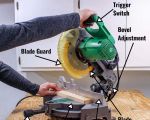Step-by-Step Guide to Building a Backyard Deck
As the weather warms up and the days grow longer, I couldn’t help but dream of transforming my backyard into the perfect outdoor living space. After considering various options, I decided to build a deck. Not only would it add value to my home, but it would provide a wonderful spot for family gatherings, relaxing evenings, and outdoor barbecues. In this article, I’ll take you through the step-by-step process of building a backyard deck, from planning and materials selection to installation and finishing touches. If you’ve been thinking of building your own deck, this guide is just what you need to get started!
1. Planning Your Deck Design
The first step in building a backyard deck is to plan your design. This is where all the creativity happens, and it's crucial to have a clear idea of what you want your deck to look like. I spent a few days drawing up sketches and researching deck designs online to find inspiration. After narrowing down the style I wanted, I made sure to take precise measurements of my backyard space to determine how large the deck could be.
Consider factors like the shape of the deck, the materials you want to use, and how the deck will connect to your home. You’ll also need to think about any features like built-in seating, railings, or steps that you might want to include. It's also a good idea to check with your local municipality for any zoning regulations or permits required for deck construction.
2. Choosing the Right Materials
One of the most important decisions when building a deck is selecting the materials. I knew I wanted something durable and low-maintenance, so I opted for composite decking. Composite materials, like Trex or TimberTech, are made from a blend of wood fibers and plastic, making them resistant to moisture, stains, and fading. While composite decking can be more expensive upfront, the long-term savings in maintenance and repairs made it a worthwhile investment.
However, you also have the option to go with traditional wood decking, such as pressure-treated lumber or cedar. These materials are often cheaper, but they require more maintenance, such as staining and sealing, to protect them from the elements. Other materials, like PVC decking or hardwoods like ipe, are also great options depending on your budget and style preferences.
3. Preparing the Site and Foundation
Once I had my design and materials selected, it was time to prepare the site for construction. I started by marking the deck’s boundaries in my yard, using stakes and string to outline where the deck would go. This helped me visualize the space and ensure that it would fit perfectly within my backyard.
The foundation of your deck is incredibly important because it supports the entire structure. For my project, I decided to go with a concrete pier foundation, which is ideal for providing a solid base. This involved digging holes for the concrete piers, ensuring that they were deep enough to provide stability. I also made sure that the piers were level to avoid any sloping on the deck.
After the concrete piers were in place, I set up the ledger board, which is attached to the side of the house and serves as the main support for the deck. Be sure to level the ledger board carefully to ensure the deck is even.
4. Building the Frame and Installing Joists
Now that the foundation was ready, it was time to build the frame. The frame serves as the skeleton of your deck, so it’s essential to make sure it’s secure. I started by attaching the rim joists to the ledger board and the opposite end of the deck. From there, I installed the inner joists, spacing them about 16 inches apart to ensure the deck was strong and stable.
The next step was to ensure that the joists were level and properly aligned. I used a level to double-check each one, making sure they were positioned correctly. Once all the joists were in place, the frame was solid, and it was time to move on to the decking boards.
5. Laying the Decking Boards
With the frame and joists in place, it was time for the fun part—laying down the decking boards! I started by laying the first board along one edge of the deck and securing it with screws. For a seamless look, I made sure to leave a small gap between each board to allow for expansion and water drainage.
When installing the decking boards, it’s essential to work your way across the entire deck, ensuring that each board is aligned with the one before it. I used a chalk line to keep everything straight, making the installation process easier. As I went along, I double-checked the spacing and alignment of each board to ensure a professional-looking finish.
For added strength and visual appeal, I opted for hidden fasteners to secure the boards, eliminating the need for visible screws on the surface. This gives the deck a clean, sleek look and makes it safer to walk on, as there are no protruding screws to catch on shoes or feet.
6. Adding Railings and Stairs
The final touches on my deck included installing railings and stairs. Railings not only provide safety but also enhance the aesthetic of the deck. I chose a simple design with vertical balusters, but there are many options available, including horizontal railings, glass panels, or even cable railings for a more modern look.
Installing stairs can be a bit more complicated, but I followed the step-by-step instructions to ensure they were stable and secure. I measured the height and width of the stairs to create consistent steps, and used stringers to support the stair treads. Once the stairs were in place, I made sure they were level and properly aligned with the rest of the deck.
7. Sealing and Finishing Touches
Finally, I added the finishing touches to my deck. If you’re using wood decking, it’s important to seal it to protect it from the elements and prevent water damage. I applied a weather-resistant sealant to the wood, which helped preserve its color and durability.
For composite decking, minimal maintenance is required, but I still gave it a good wash to remove any dirt and debris. Adding furniture, plants, and outdoor lighting completed the look, transforming my backyard into the perfect outdoor retreat.
Building a backyard deck is a rewarding project that can greatly enhance your home’s outdoor living space. While it takes some time and effort, the satisfaction of completing it yourself is unmatched. Whether you’re hosting a barbecue or simply relaxing with a good book, a well-built deck is the perfect spot to enjoy the outdoors. If you’re ready to start your deck project, remember to plan carefully, choose the right materials, and take your time with each step. The results will be well worth the effort!









